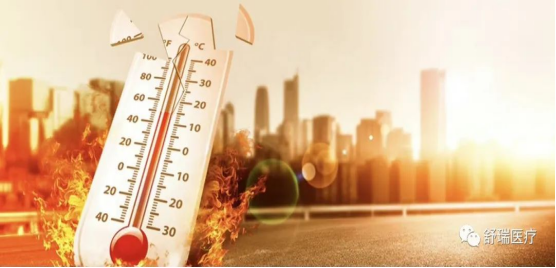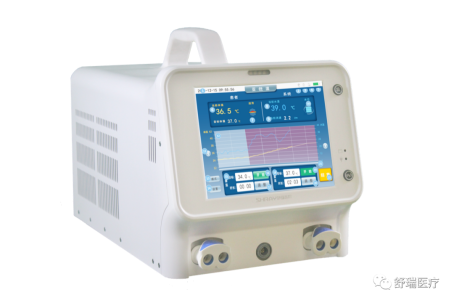Company News
The summer heat is coming, and there is a new weapon to prevent and treat heat stroke
Tests from the National Climate Center show that since June 13, my country has experienced the first regional high-temperature weather process this year.
As of July 12, the high temperature event has lasted for 30 days, covering a land area of 5.021 million square kilometers and affecting a population of more than 900 million people. Under continuous high temperatures, heat stroke incidents occur frequently in many places, and there are even deaths from "heat stroke".

Many people have been diagnosed with heat stroke in many places
According to the Affiliated Hospital of North Sichuan Medical College, the hospital has received two consecutive cases of heat stroke patients, one of whom has unfortunately passed away.
On July 6, the Emergency Medicine Department of Lishui Central Hospital received a 47-year-old patient with heat stroke. It is understood that the patient was a workshop worker who suddenly collapsed while working. After more than 30 hours of rescue, the patient was not out of danger and died in the early morning of July 8.
On July 10, West China Hospital of Sichuan University admitted three consecutive heat stroke transfer patients. One of them suffered from respiratory and cardiac arrest when he was transferred to West China Hospital due to severe illness and multiple organ failure. Despite all efforts to rescue him, , but eventually passed away unfortunately.

1What is heat stroke?
Heat stroke is caused by high temperature causing dysfunction of the body temperature regulation center. The imbalance of heat balance causes heat accumulation in the body, thus causing damage to nerve organs. It usually occurs in high temperature and high humidity weather in summer.
2What are the causes of heat stroke?
Heat stroke can be divided into exertional heat stroke and classic heat stroke. Exertional heat stroke is mainly caused by the imbalance of heat production and heat dissipation in the body caused by high-intensity physical activity. It is common in healthy young people who exercise strenuously in summer, such as officers and soldiers, athletes, firefighters, construction workers, etc. who participate in summer training.
Classic heat stroke is more common in young people, pregnant women, the elderly and infirm, or individuals with chronic underlying diseases or compromised immune function. It is usually caused by passive exposure to the thermal environment, causing an imbalance between the body's heat production and heat dissipation.
3How to prevent heat stroke?
1. Supplement nutrition: In the face of high temperatures in summer, nutritious meals should be based on foods high in calories, high in protein, and rich in vitamins A, B1, B2 and C.
2. Get enough sleep: In summer, the days are long and the nights are short, making it easy to feel tired. Adequate sleep can relax the brain and body systems, which is not only conducive to work and study, but also a good measure to prevent heatstroke.
3. Sun protection: When going out, you should use a parasol, wear a sun hat, sunglasses, and apply sunscreen.
4. Avoid the scorching sun: Heat stroke is often caused by being exposed to the scorching sun for too long, so you should avoid the scorching sun when traveling in summer, especially avoid traveling from 10 am to 16 pm. Elderly people, pregnant women, and people with chronic diseases, Especially people with cardiovascular disease should reduce going out as much as possible.
5. Avoid working under high temperatures for long periods of time: Outdoor workers should avoid working under high temperatures for long periods of time. The deceased in the above news suffered from heat stroke caused by working under high temperatures.
4What are the symptoms of heat stroke?
It usually manifests as high fever, body temperature above 40°C, dry and hot skin without sweating, mental disorder, organ failure, etc. Without timely and proper treatment, the mortality rate of heat stroke ranges from 20% to 70%, and can be as high as 80% for patients over 50 years old.
5How to treat heat stroke?
The "Expert Consensus on Emergency Diagnosis and Treatment of Heat Stroke (2021 Edition)" states that the treatment of heat stroke:
1. Rapid, effective and continuous cooling should be the primary treatment measure for heat stroke. Active and effective cooling measures include:
(1) Wipe with water bath or ice water,
(2) Electronic ice blanket and ice cap
(3) Rapid liquid rewarming
(4) Drug cooling is not recommended
2. The principle of “cooling first and then transferring” and continuous cooling during the escort is recommended in early on-site treatment. The management of heat stroke during transportation is particularly important. Body temperature should be closely monitored to achieve sustained and effective cooling, and cooling treatment should not be delayed due to transport and evacuation.
(It is difficult to achieve curative effect through drug cooling for central hyperthermia, and physical cooling is the main method. In clinical treatment, physical cooling is mostly done by ice packs, blowers, cold water baths, etc., which will cause the capillaries of the patients skin to shrink and reduce the amount of blood that passes through the blood circulation. The heat emitted actually affects the decrease in core body temperature. Therefore, temperature control equipment with body temperature monitoring, temperature control adjustment, and pre-hospital transport is recommended.)
A new generation of intelligent temperature controller
Shurui Medicals new generation intelligent temperature controller:
Compared with the traditional water circulation cooling blanket, Shuruis new generation intelligent temperature controller has a water temperature adaptive adjustment algorithm with temperature feedback control, which has better temperature control effect. The average cooling speed is faster during the induction period, the body temperature fluctuation is small during the maintenance period, and the temperature during the rewarming period is better. The rate is controllable to achieve optimal target body temperature management (TTM) treatment. The device is small in size and light in weight. It has a lithium battery and can be mounted on a vehicle. It meets the needs of equipment use in scenarios such as pre-hospital first aid and inter-hospital transfer. It can play an important role in the treatment of patients with heat stroke and severe heat stroke in outdoor high-temperature weather in summer.

